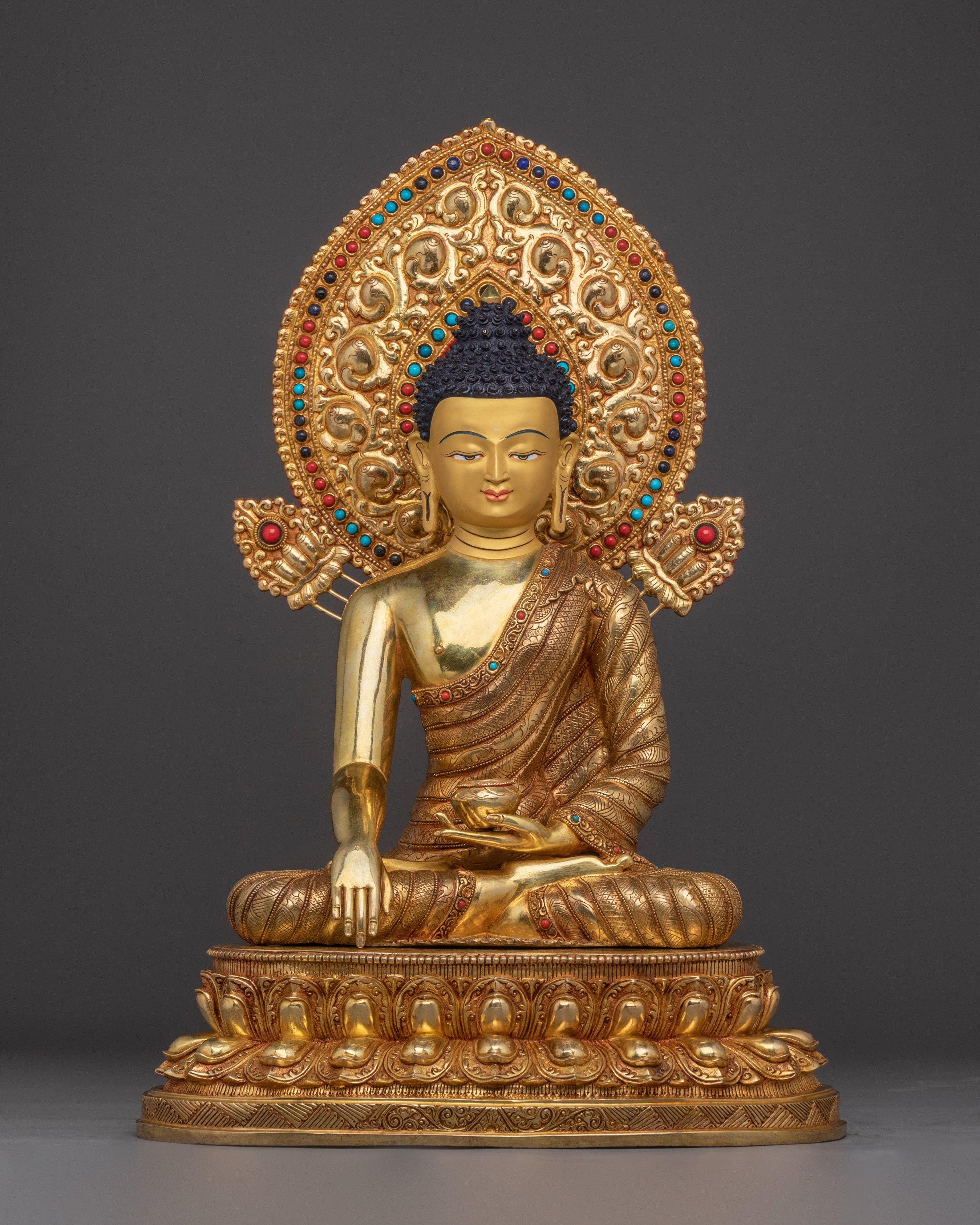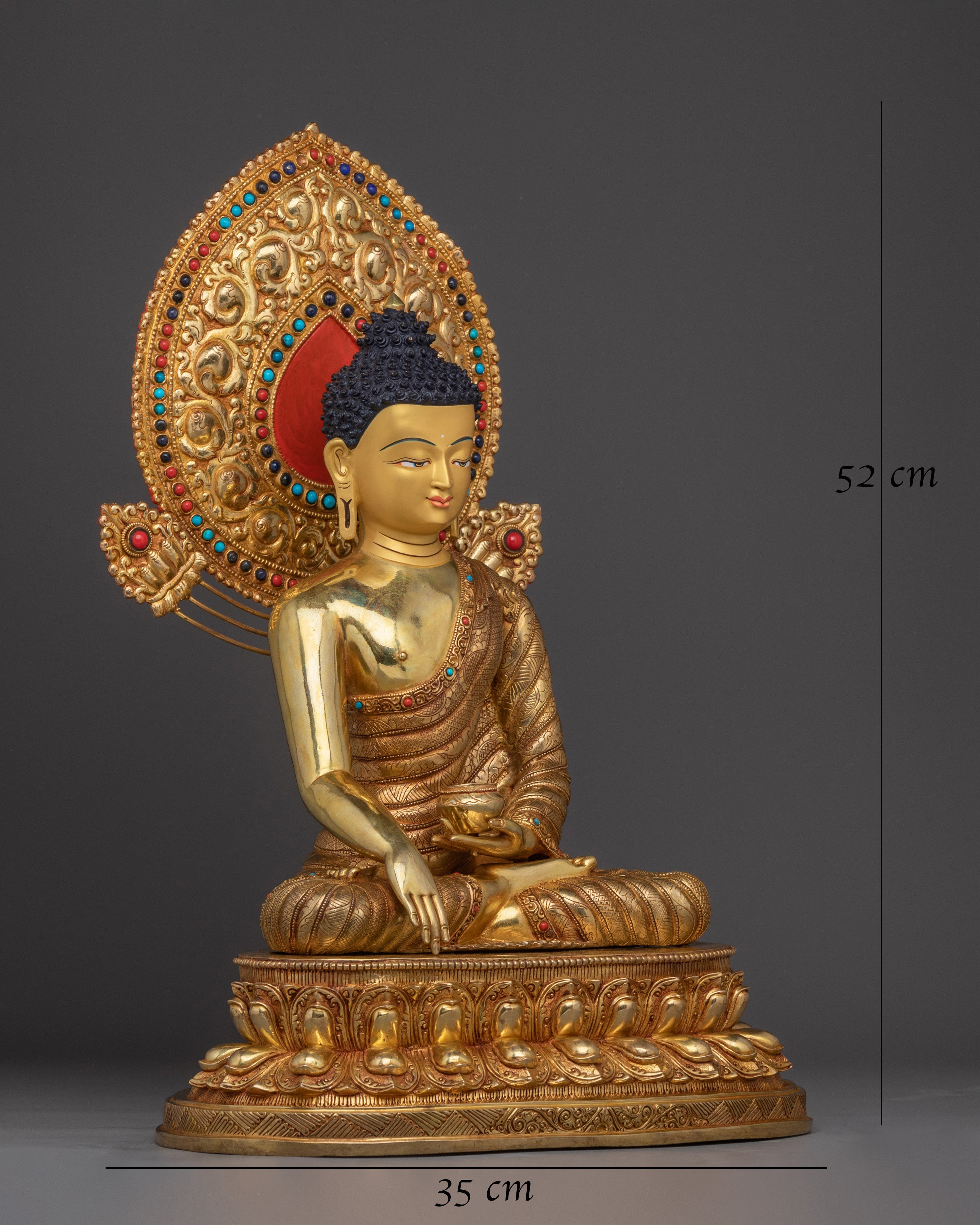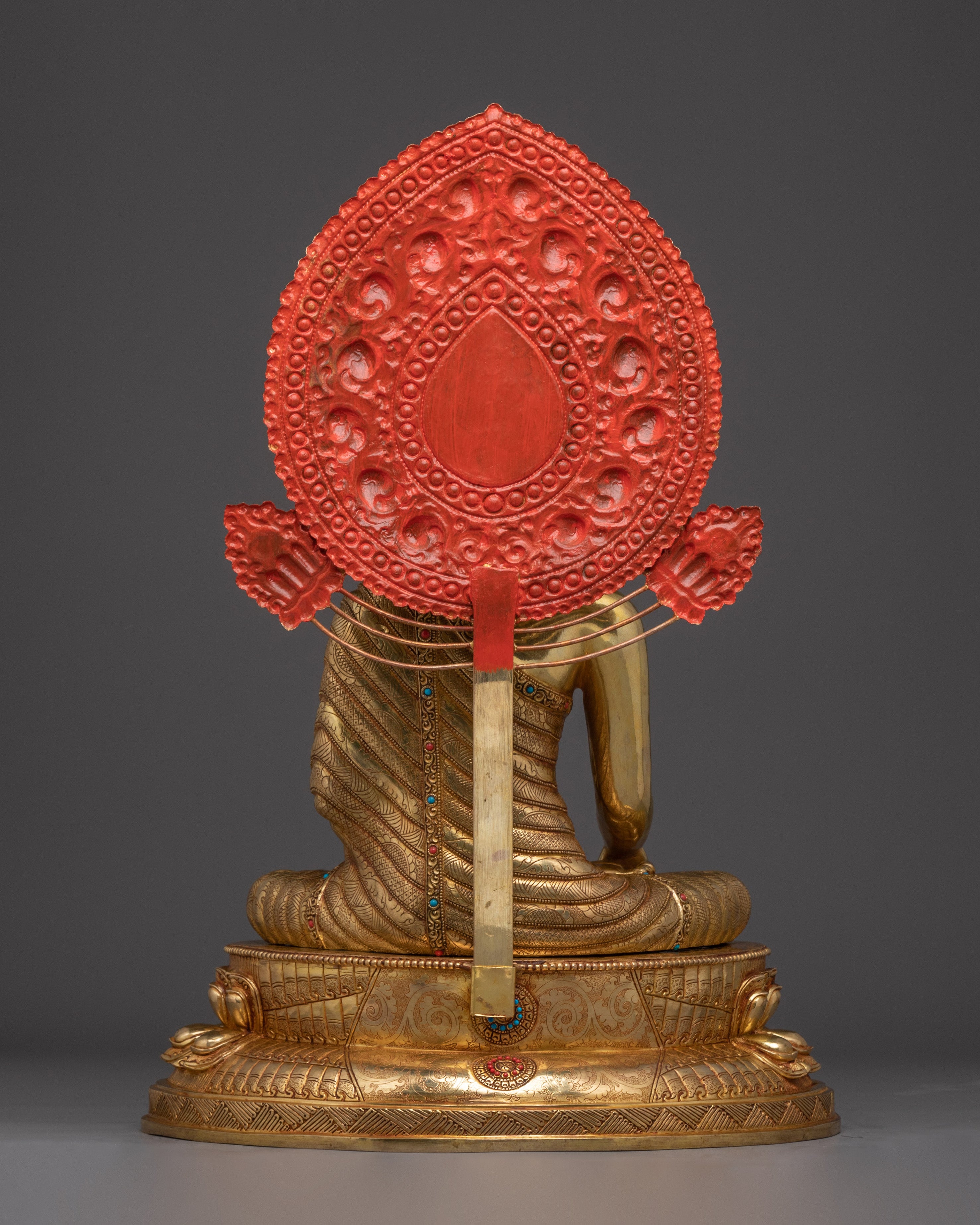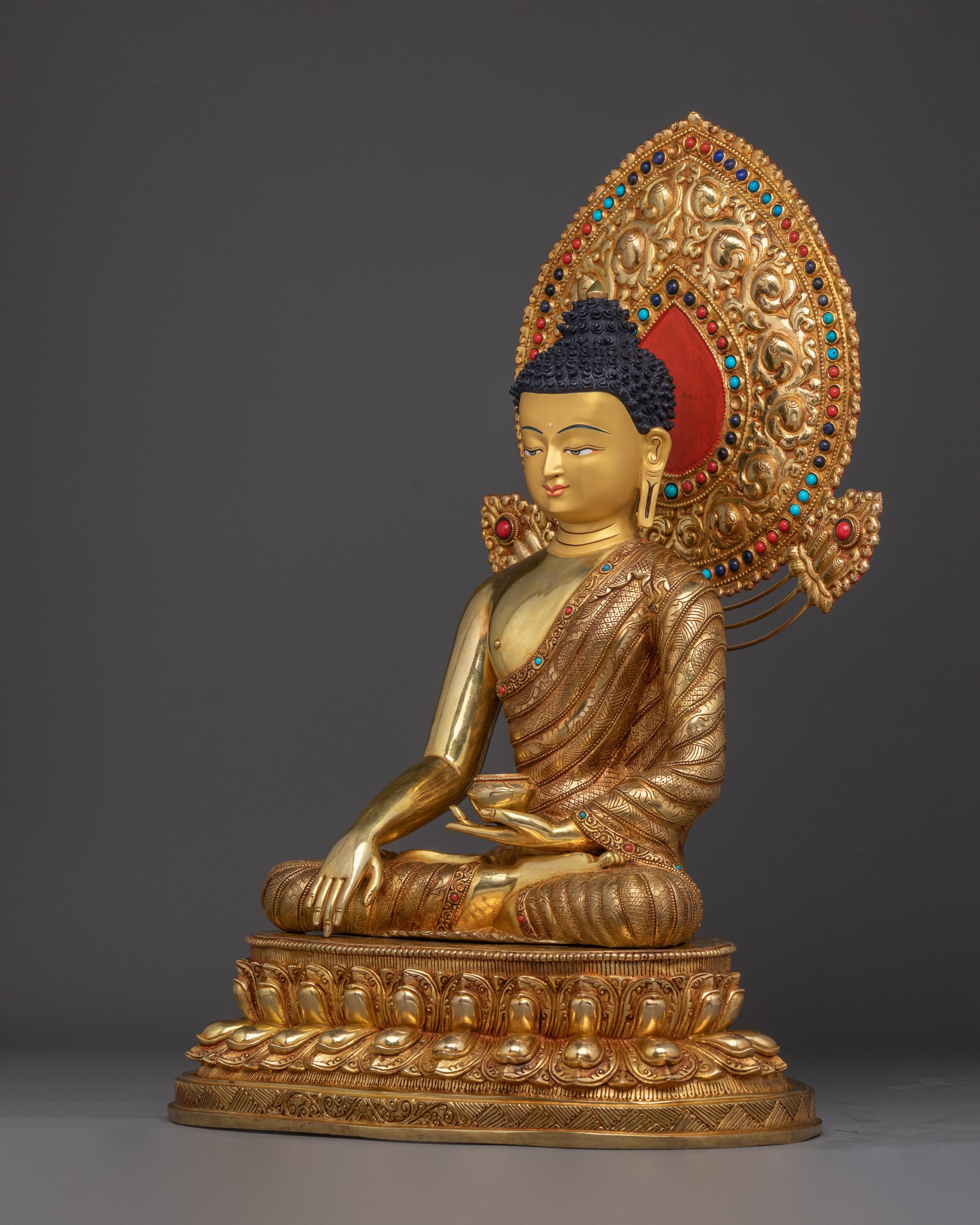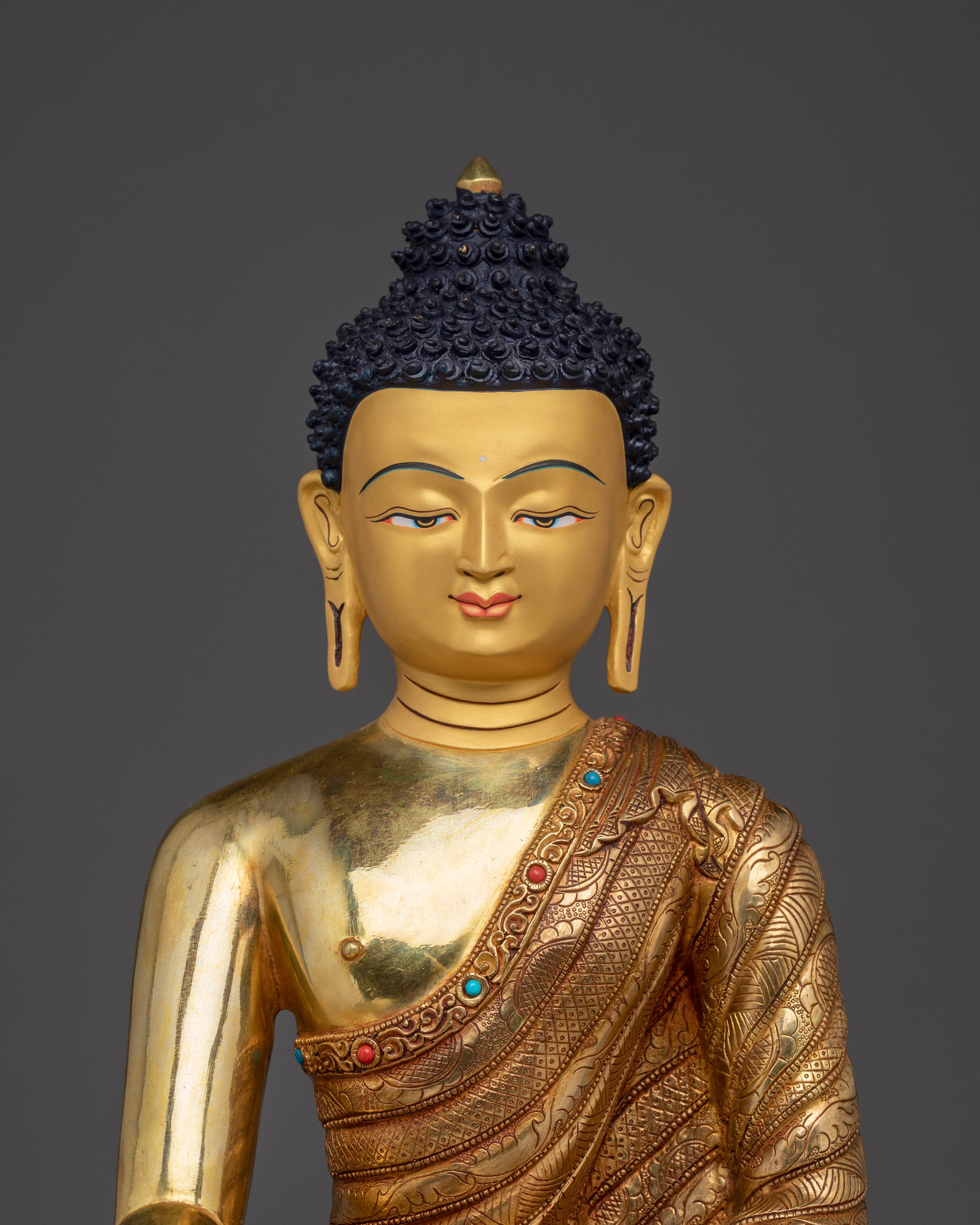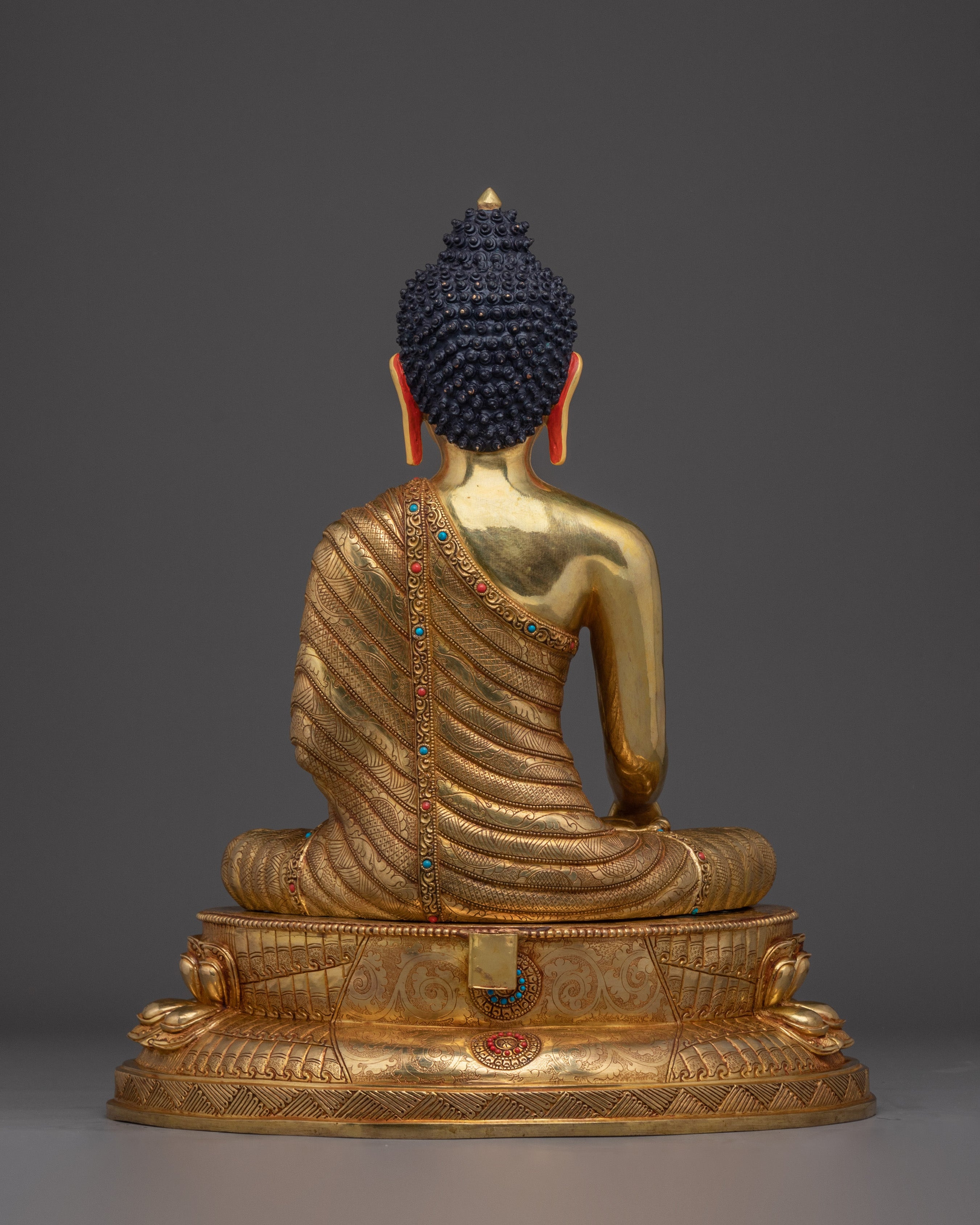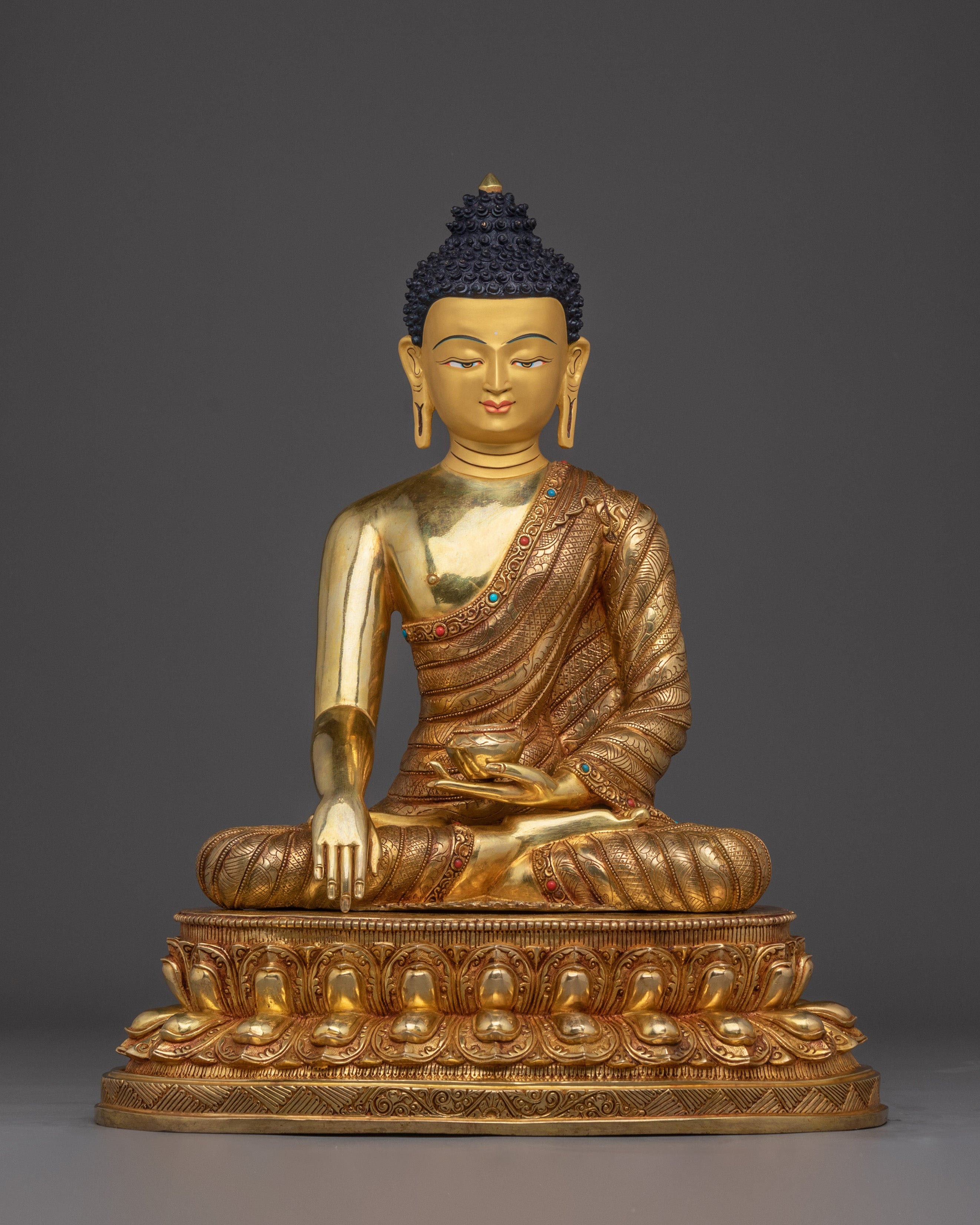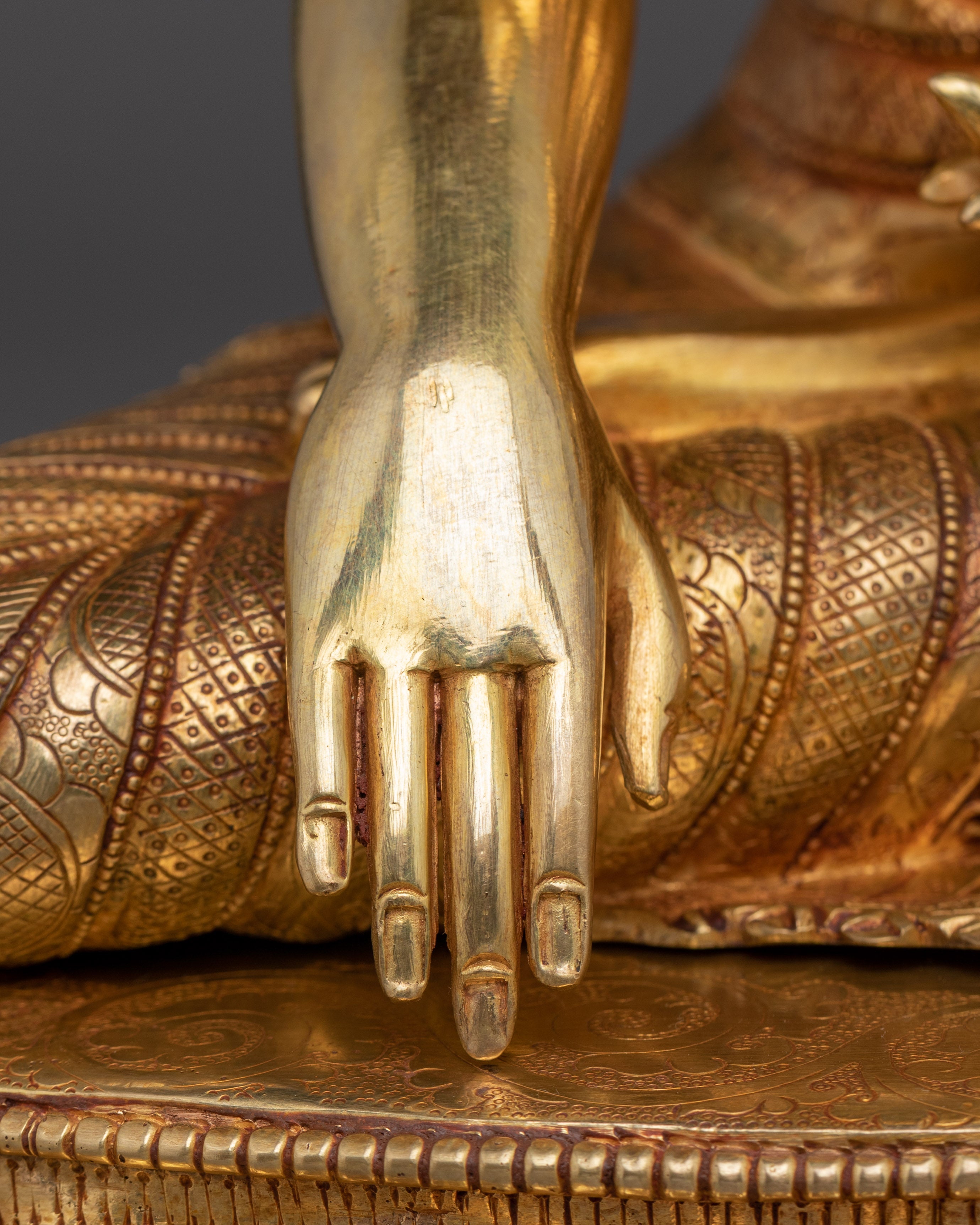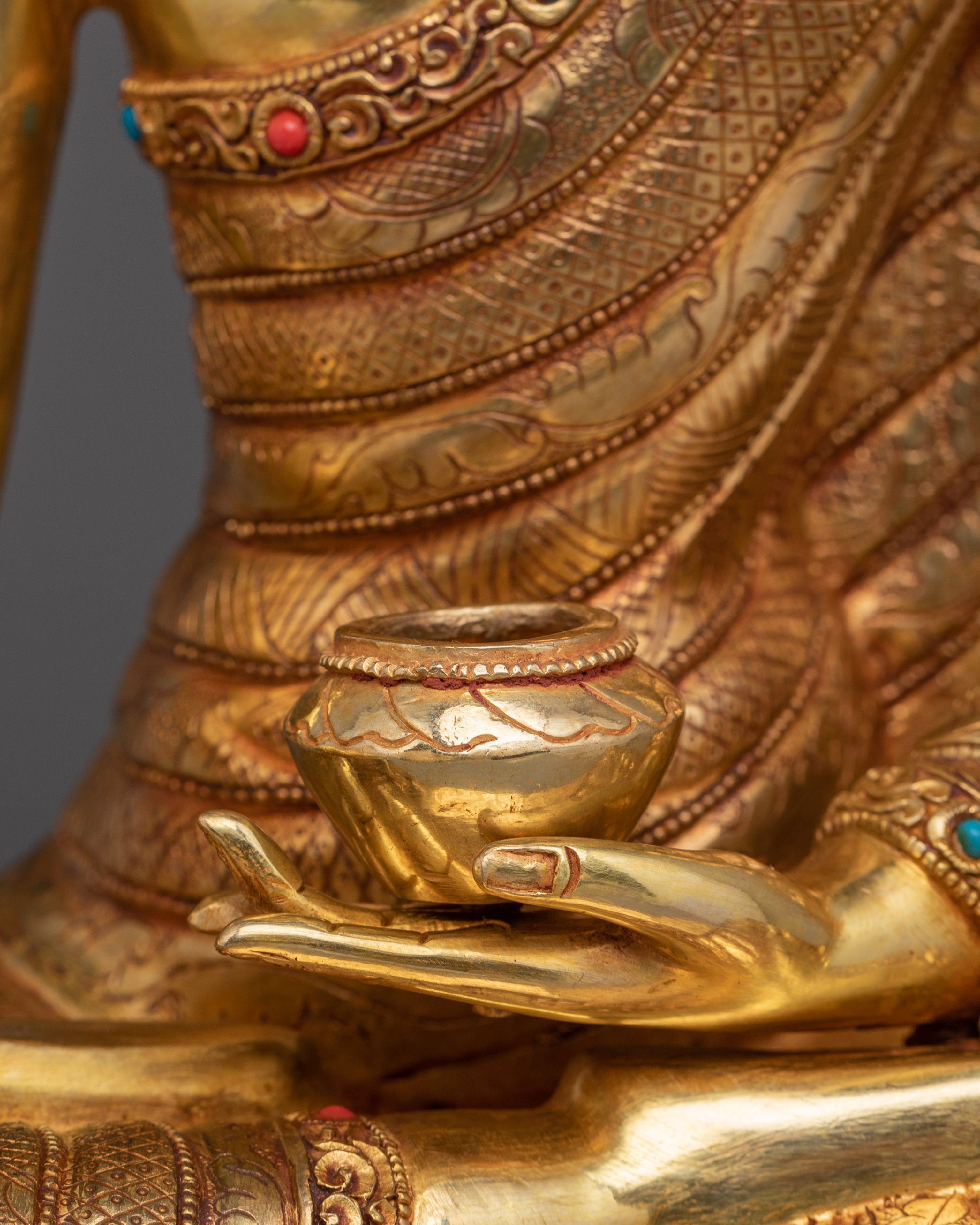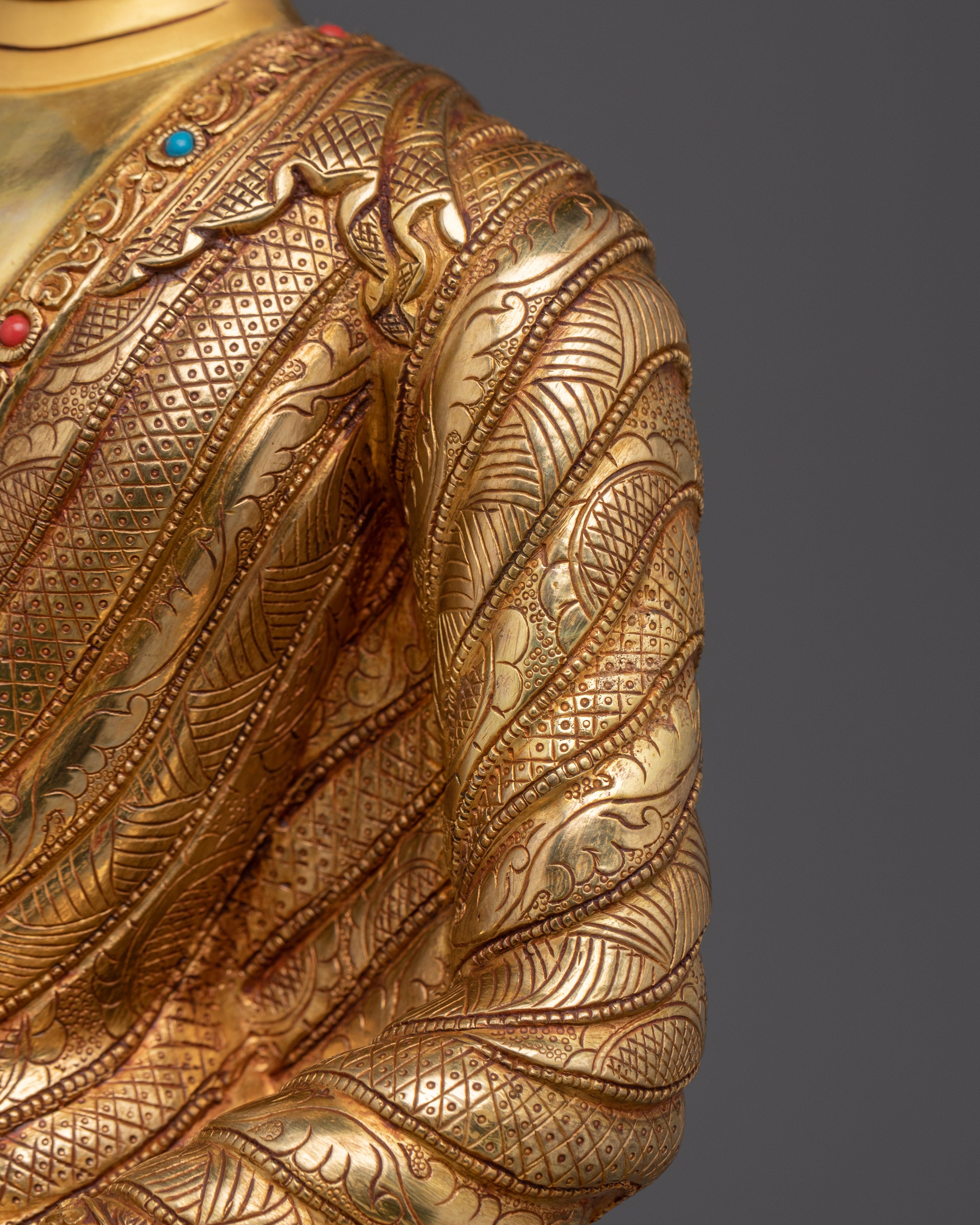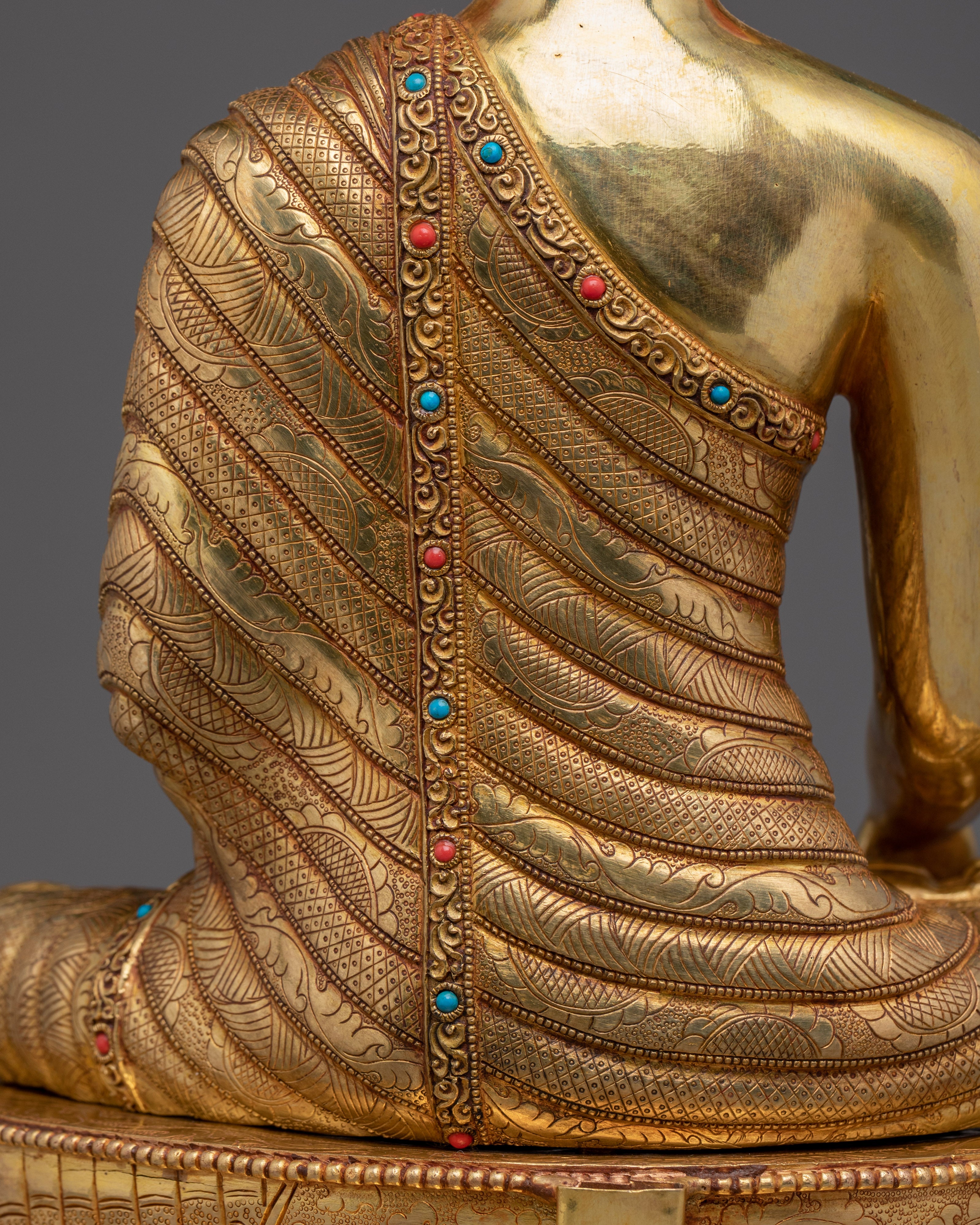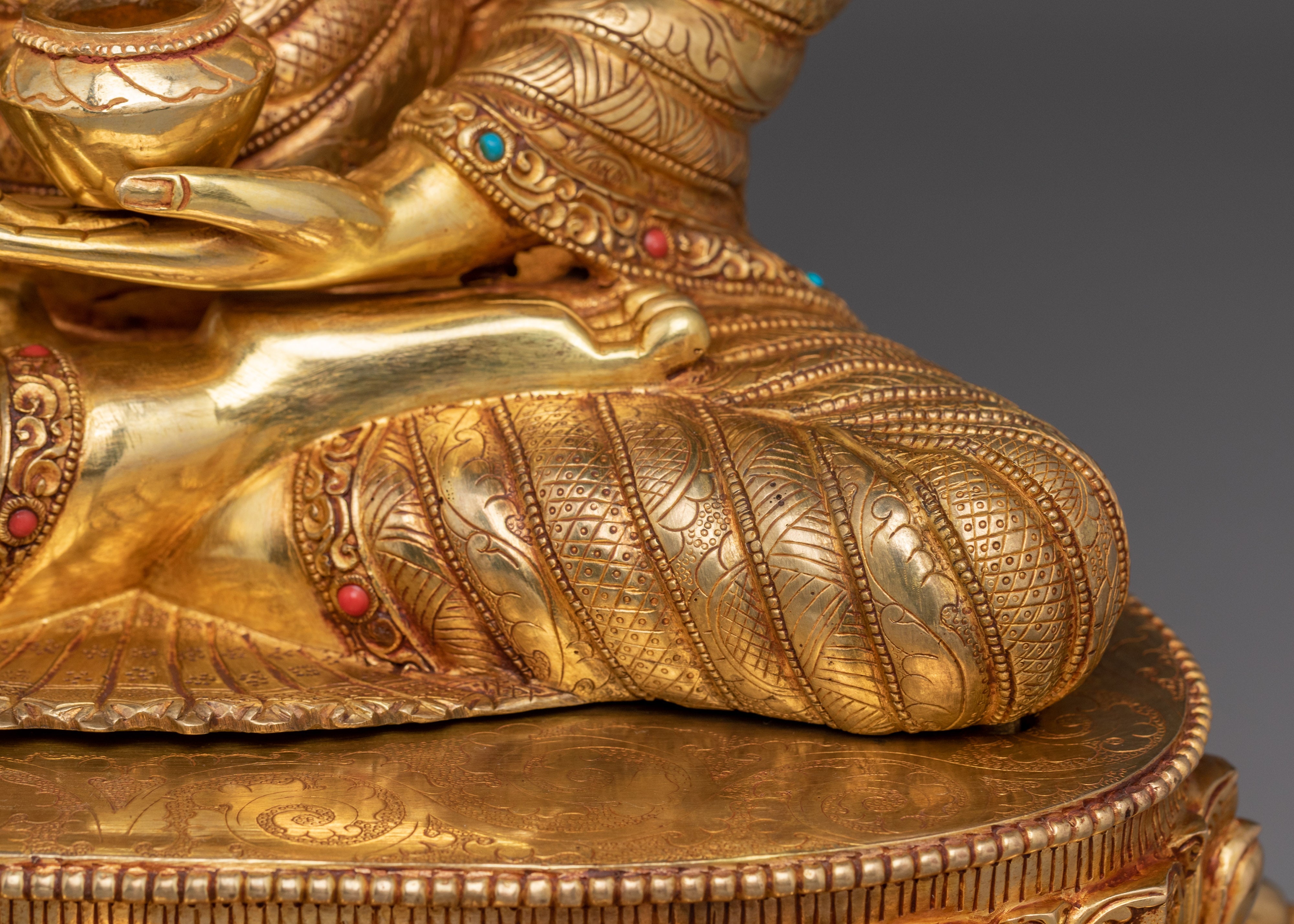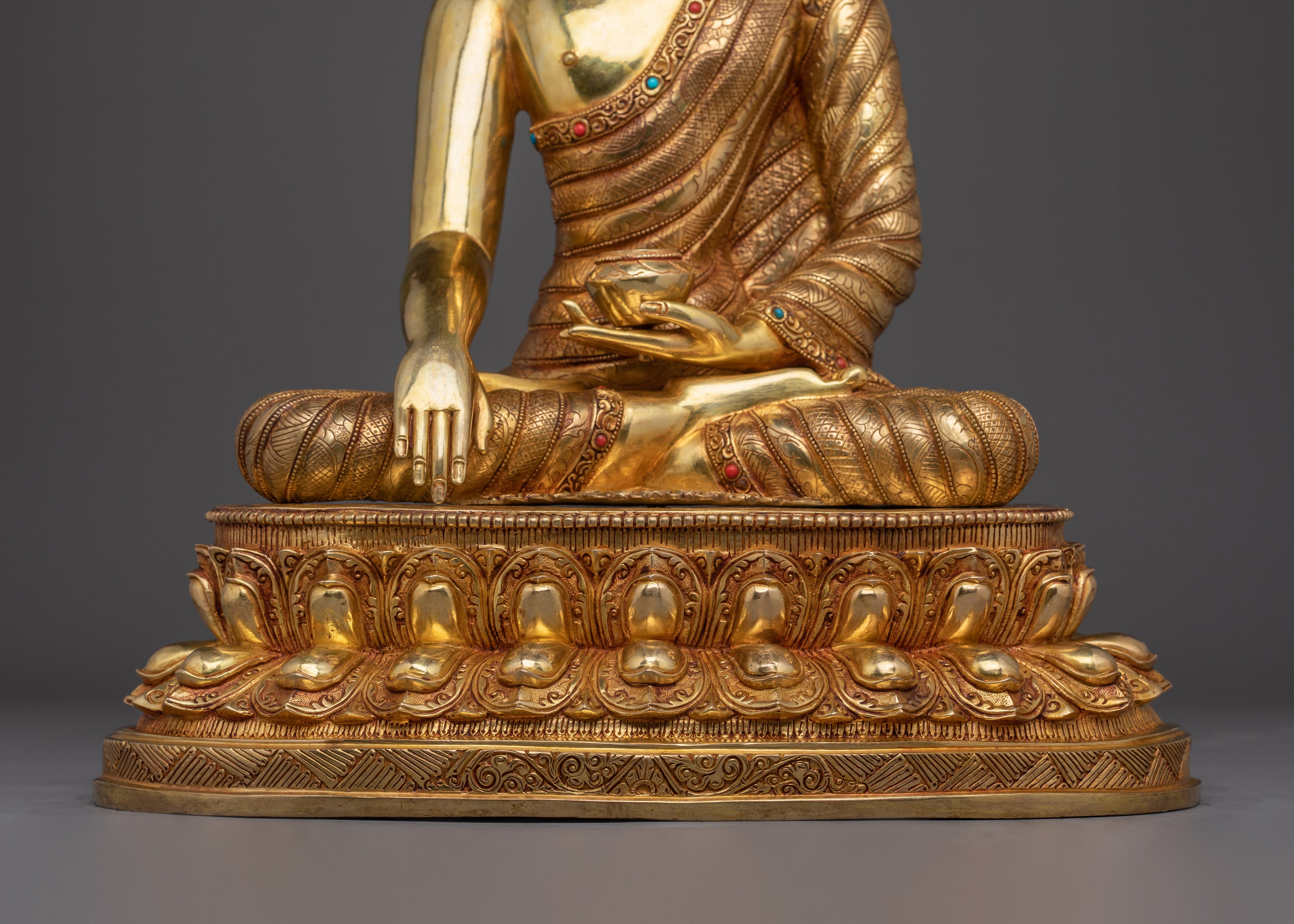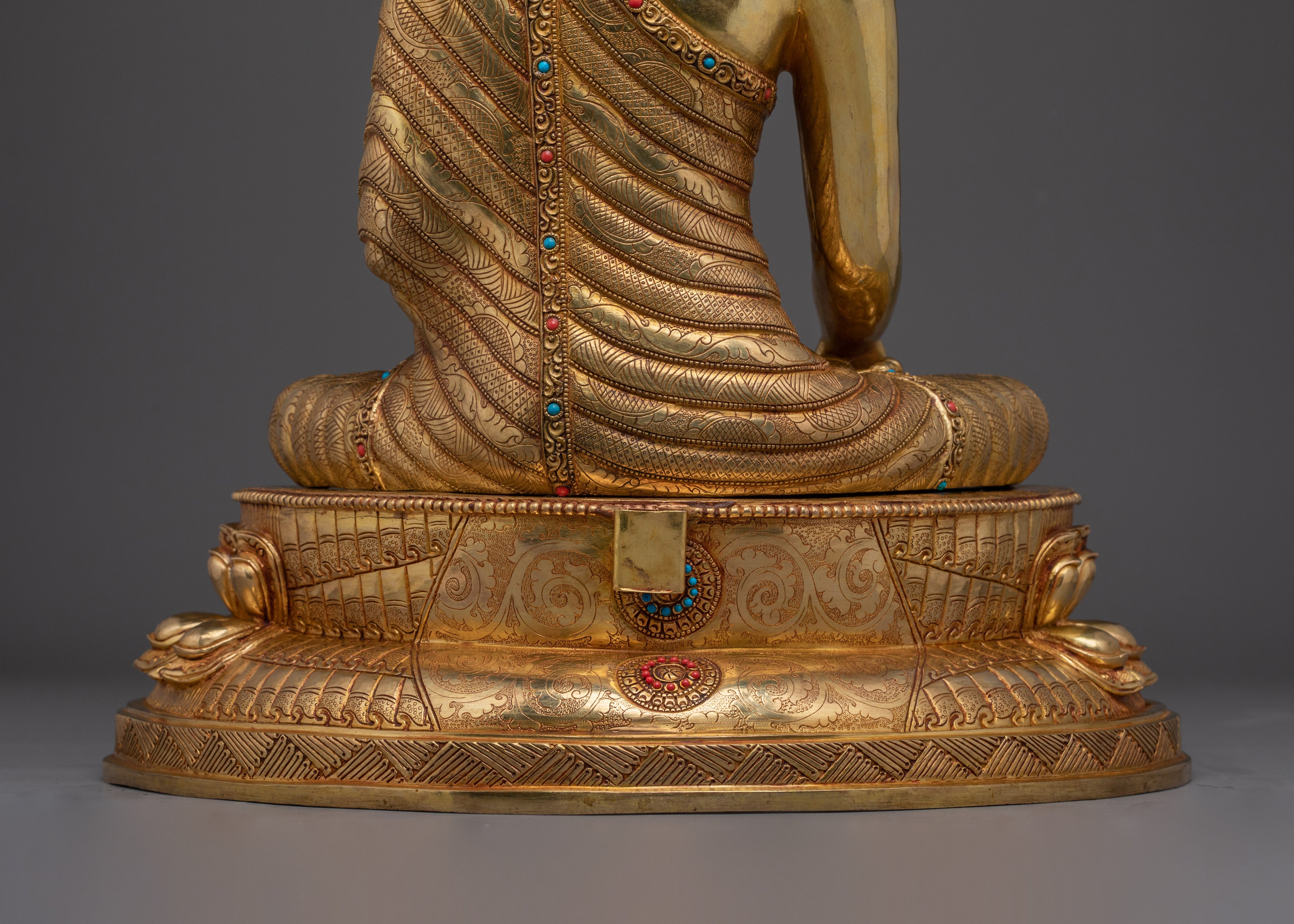Description
Golden Statue of Awakened Gautama Buddha | Peaceful Buddha Home Decor
This golden statue of Awakened Gautama Buddha, also known as Shakyamuni Buddha, measures 20.5”/52cm in height and 13.8”/35cm at the base and weighs 8.31 kg. Made from copper, covered with a triple layer of 24K gold gilding, and carved with deeply engraved carvings that produce a magnificent 3D-like effect. This sculpture, handcrafted by expert Nepalese artisans, elegantly symbolizes Himalayan Buddhism's sacred traditions, making it an appropriate addition to altars, meditation places, or sacred collections.
Shakyamuni Buddha is depicted in a serene, meditative state with half-closed eyes, reflecting deep inner peace and awakened awareness. His right hand rests in the bhūmisparśa mudrā (earth-touching gesture), symbolizing the moment he called the Earth to witness his enlightenment, while his left hand holds an alms bowl, representing detachment and the monastic path. Atop his head is the uṣṇīṣa, a symbol of enlightened wisdom, and his hair is coiled and encircled by snail-like forms, referencing the famous tale of snails shielding him from the sun during his extended meditation. He is seated in vajra posture on a moon disc lotus base, embodying spiritual firmness and purity. Behind him is a beautifully detailed halo, radiating the light of enlightenment, richly adorned with intricate carvings and inlaid gemstones, enhancing the divine aura of the statue. Two elegant lotus flowers bloom behind him, symbolizing purity rising from samsara and the blossoming of awakened potential. This exquisite iconography captures the full presence of the historical Buddha—tranquil, majestic, and eternally present.
Size: 20.5”/52cm (Height) x 13.8”/35cm (Base)
Weight: 8.31 kg
Material: 24K Gold Gilded, Gold & Acrylic Paintings, Copper Body, Gemstones
Gautama Buddha, also known as Shakyamuni Buddha, was a spiritual teacher and the founder of Buddhism, born as Siddhartha Gautama in ancient Nepal. Renouncing his royal life in search of truth, he attained enlightenment under the Bodhi tree and shared the path to liberation from suffering. At the core of his teachings are the Four Noble Truths: the truth of suffering (duḥkha), its origin (samudaya), its cessation (nirodha), and the path leading to its cessation (mārga). This path is known as the Noble Eightfold Path, which includes right view, right intention, right speech, right action, right livelihood, right effort, right mindfulness, and right concentration—a guide to ethical conduct, mental discipline, and wisdom that leads to the end of suffering and ultimate freedom (nirvāṇa).

